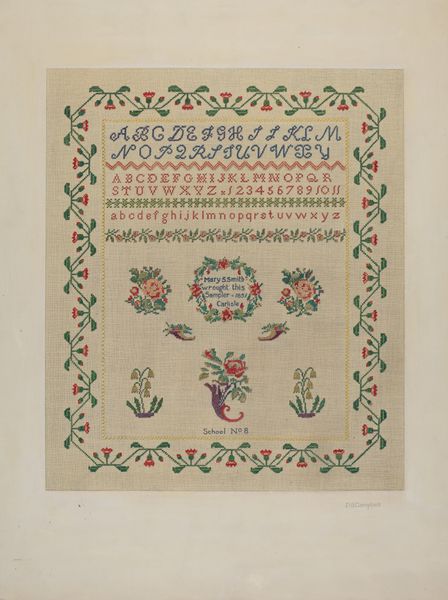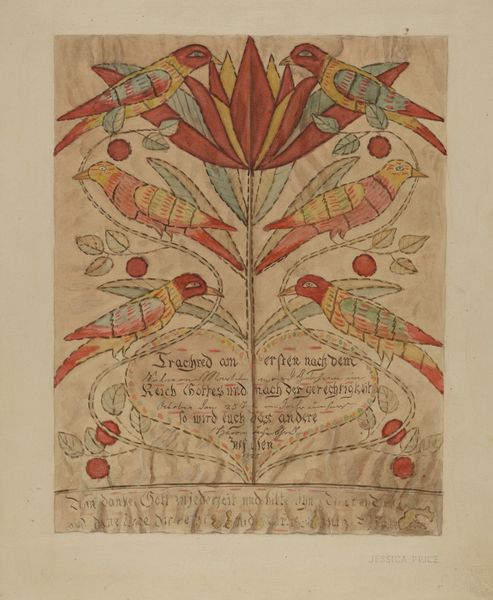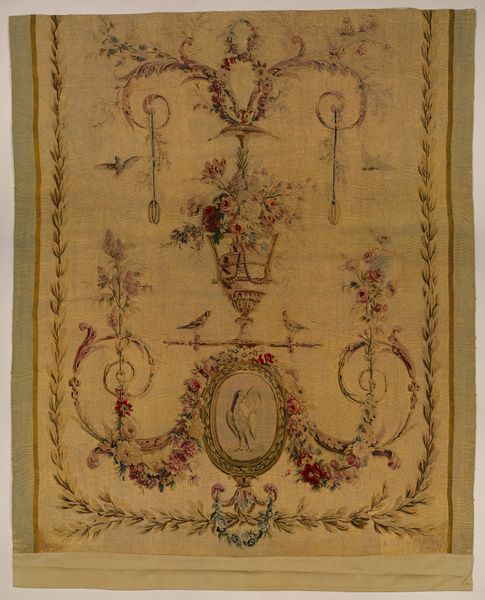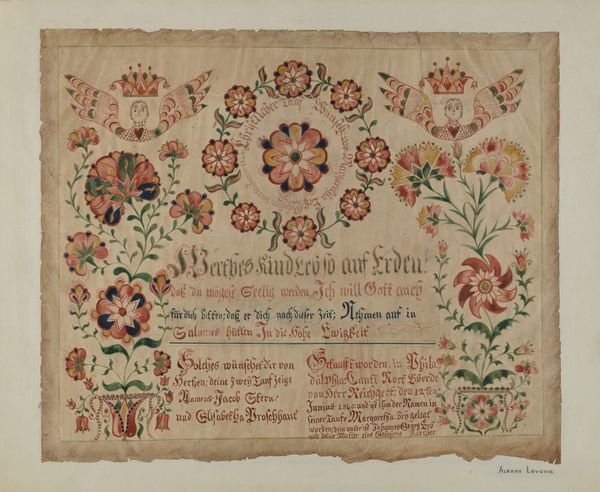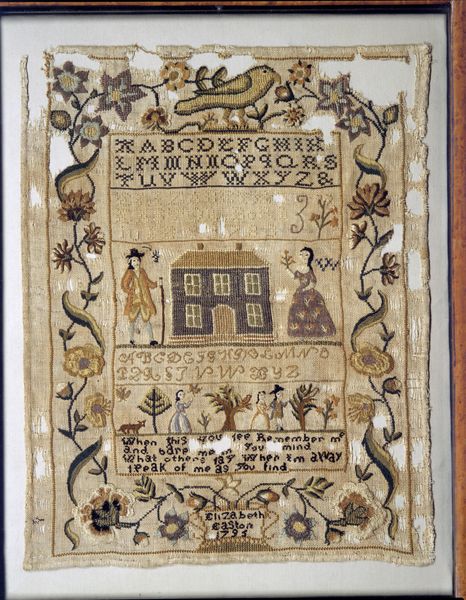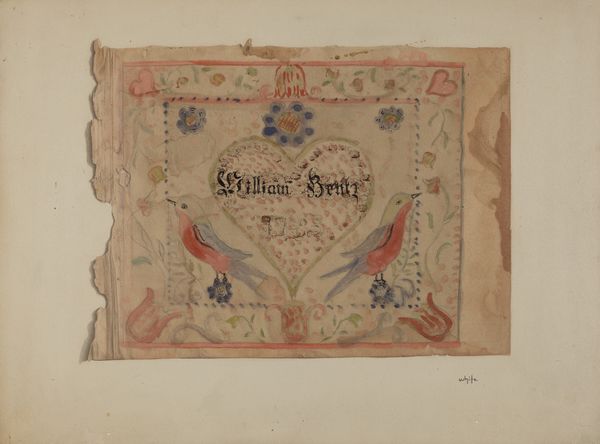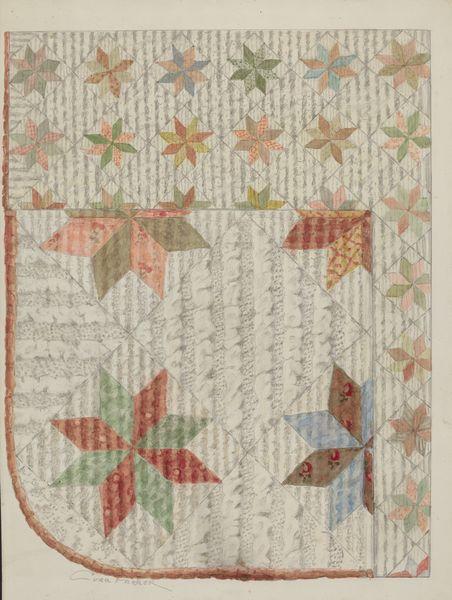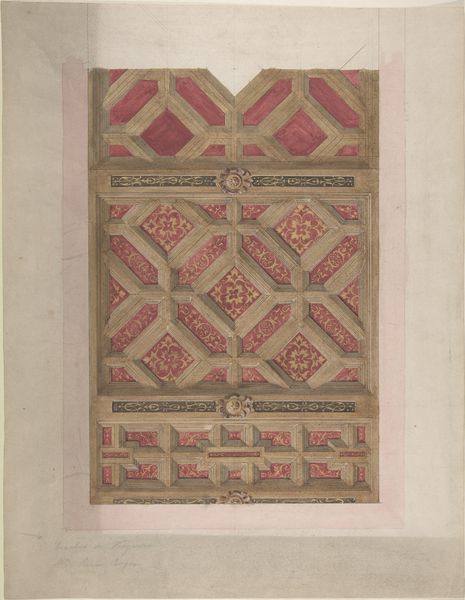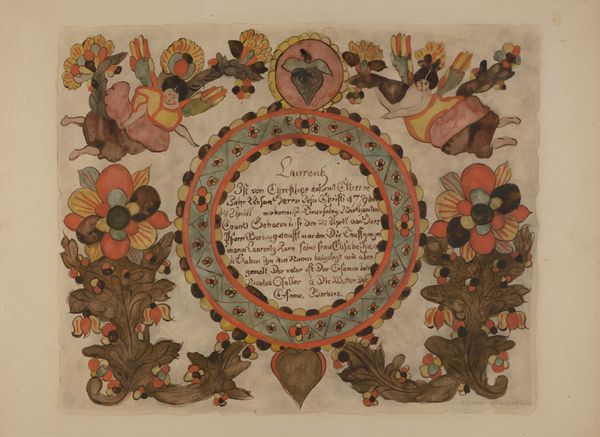
drawing, fibre-art, textile
#
drawing
#
fibre-art
#
water colours
#
narrative-art
#
ink paper printed
#
textile
#
folk-art
Dimensions: overall: 71 x 51.9 cm (27 15/16 x 20 7/16 in.) Original IAD Object: 16 1/2" wide; 54" long
Copyright: National Gallery of Art: CC0 1.0
Curator: This is a “Pa. German Show Towel,” likely crafted around 1847, an exquisite example of folk art utilizing fibre. Editor: It’s surprisingly tender. Despite the regimented stitching, the pastel colors and the array of creatures – the deer, the birds, even the stylized tulips – impart a sense of gentleness and hope. Curator: Yes, those motifs are prevalent in Pennsylvania German folk art. Birds often symbolize souls or spiritual messengers; deer, often emblems of peace and harmony in a natural setting. You’ll often find hearts, too. These carry echoes of old European pagan traditions as well as their Christian interpretation as symbols of devotion, fidelity, love and compassion. Editor: "Jacob Stouffer this towel I made for sake of thee / when this you see remember me 1847." That line so directly situates this piece in history and relationships. There is someone who wants to be remembered through a deeply personal object, something made with his own hands. The care taken in crafting these types of pieces are generally a great indication of commitment. Curator: The textiles carry generational significance and demonstrate enduring practices. The continuity itself becomes a statement about heritage. Each cross-stitch is both an act of preserving culture and asserting an identity through symbols. Editor: I also think about who these folk pieces are *for.* Were these textiles part of a trousseau, signaling both domestic capability and cultural allegiance? Are they tools or statements? Objects imbued with a potent feminine, domestic symbolism, reflecting and shaping roles? I am struck by that phrase, “Remember Me," it is so naked. So vulnerable. I keep thinking that Jacob, whoever he may have been, has spoken to us clearly across all this time and circumstance. Curator: In seeing a shared past, in finding continuities through cultural expressions, we ensure that remembrance endures. And art can and often becomes an invitation, or summons, towards understanding our connection to previous traditions. Editor: Absolutely. To recognize echoes across time—in art, in symbols, in simple human requests, that's a radical act of acknowledgment. That connects us all and renders it meaningful to ask in return, “We remember you Jacob.”
Comments
No comments
Be the first to comment and join the conversation on the ultimate creative platform.
